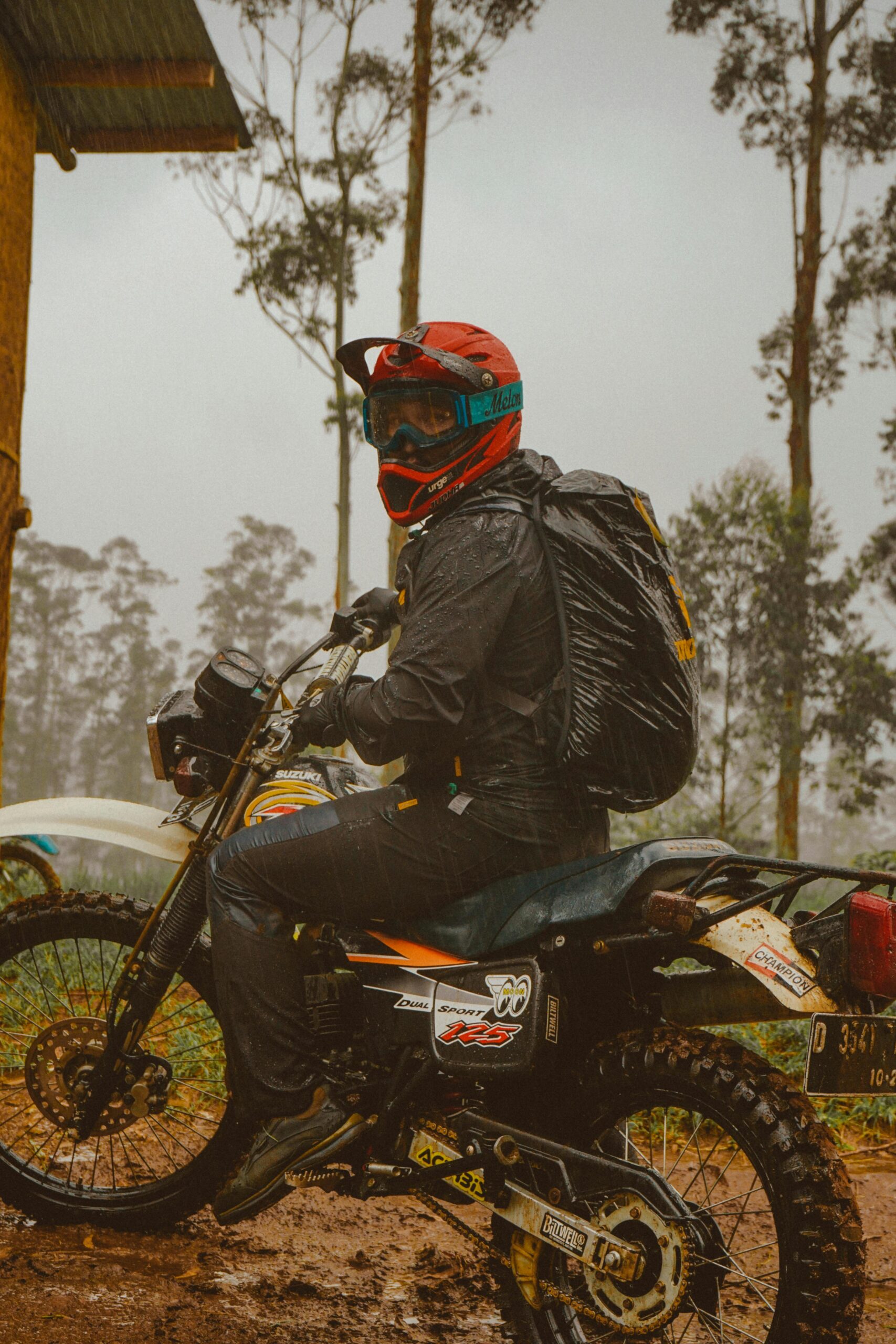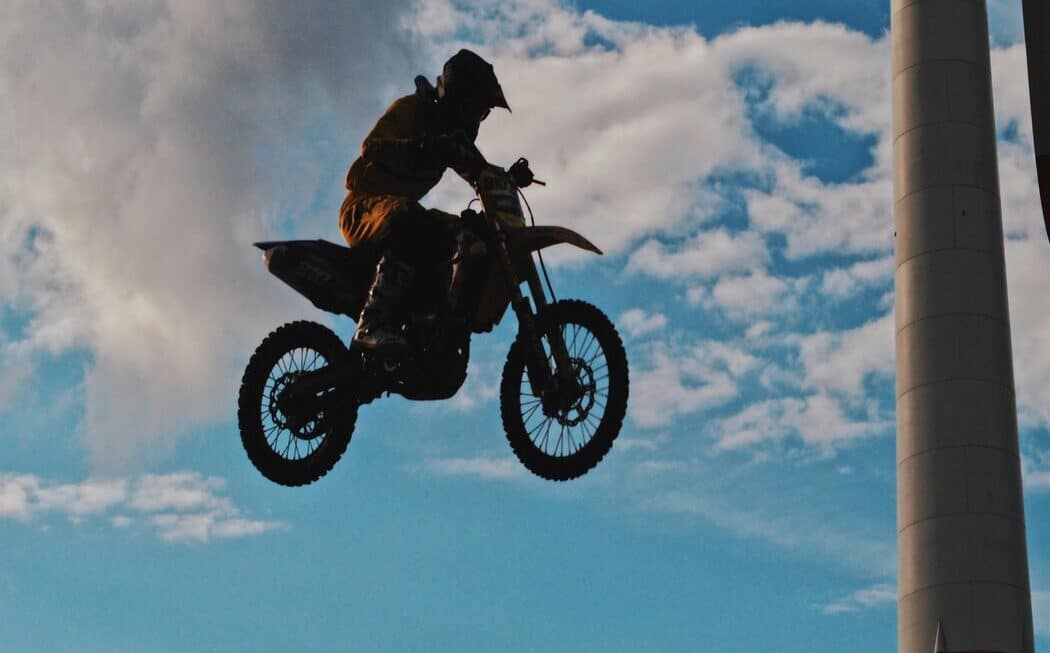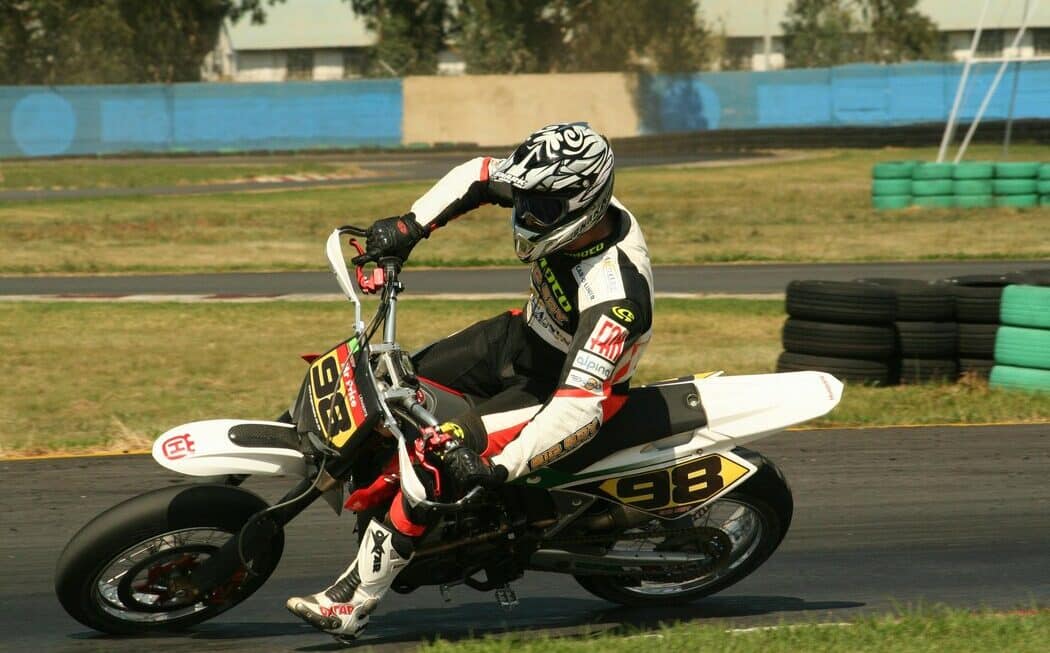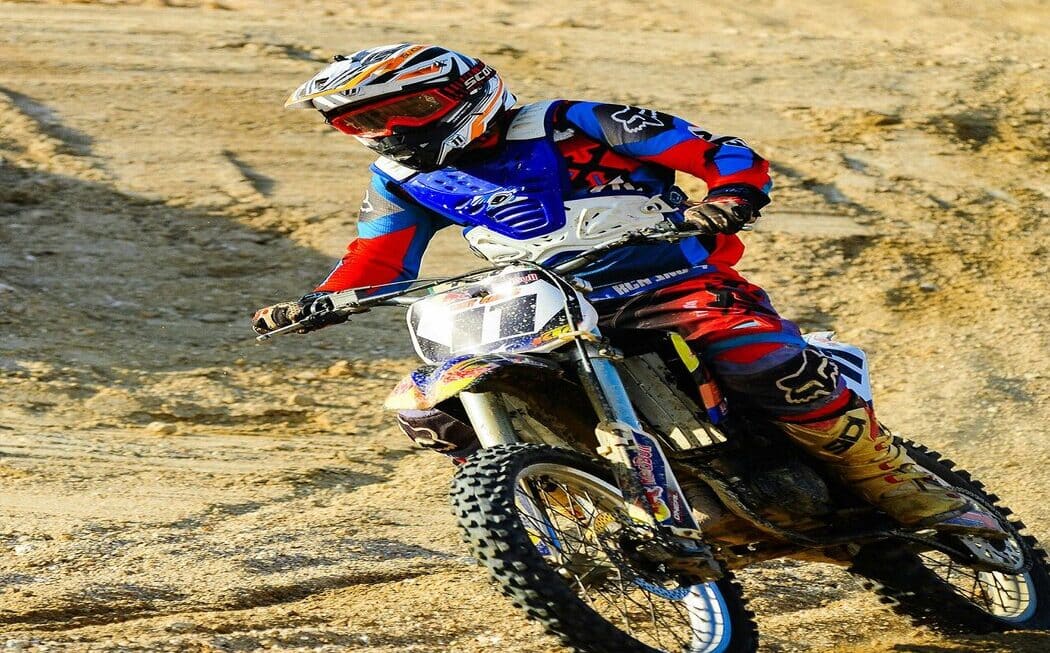There’s no denying that dirt bike riding in the rain is not for the faint of heart, but it can be a ton of fun and offer up some great experiences. The key to successful dirt bike riding in the rain is to be prepared. Unpredictable weather means you need to be ready for anything wet, muddy tracks; slick surfaces; deep puddles; and limited visibility. First and foremost, make sure your bike has been properly serviced and is well-broken in to handle wet conditions. Adjust air pressure if necessary for added grip, ensure brakes are working well, and swap out regular ride gear with more waterproof apparel. Keep safety at the forefront of your rain ride plan!
When you have all of the proper safety measures in place, hit the track or trails! Dirt bike riding in the rain can be lively since braking can become unpredictable as both dry patches give way to sudden slippery spots. Approaching turns with caution becomes essential here and aims to take faster corners steadily if they feel unsafe. Try high pressure on tires on hard-pack terrain but start lowering pressures once mud appears, through trial and error models that work best for your tracks/trails as different type of surfaces require different tire pressures/gas mixtures.
Here are some tips for dirt bike riding in the rain:
Bring a Dry Bag
A dry bag is an essential item for any outdoor enthusiast. Whether you’re a bike rider, rock climber, or off-road enthusiast you need to protect your gear and keep it dry. A basic dry bag is great for carrying your second set of gear, such as a change of clothes. This makes the drive home much more comfortable after a long excursion in potentially wet weather.
For off-roaders, however, dry bags take on an even greater purpose. A large waterproof bag can be tossed into the back of a truck or trailer and loaded with anything you need for the ride but don’t want to get wet along the way: from layers of warm clothing to camp supplies and tools. For this reason, many adventurers prefer waterproof dry bags that can handle all kinds of elements while keeping your stuff safe and dry.
Use a Vented Goggle Lens
The vented goggle lens, or also known as the dual-pane goggle lens, is great for minimizing fogging on rainy days. The dual-pane construction of the lens prevents your vision from being obscured by rain water droplets condensing onto the surface. This essentially means that when riding in a downpour your visibility won’t be hampered by fogging. The lens also works to wick away moisture and keep air circulating around the eyes for optimal comfort even during wet weather activities.
Vented lenses are specially designed with an airflow system, drawing in cooler outside air through top vents while pushing out warm, damp inside air, allowing you to ride uninterrupted and with maximum security. They also provide superior protection against wind since they create a microclimate that blocks out gusts while at the same time reducing wind chill and helping keep your eyes comfortable and shielded. Ultimately, having a vented goggle lens can enhance your performance on wet days as you don’t have to focus energy on keeping them free of fog but rather chasing your goals instead!
Use Spray
Going out for a ride in the rain is an exhilarating experience, but it comes with the risk of being bogged down by a thick layer of mud. Without proper protection, mud can build up underneath your fenders; resulting in difficult clean-up post-ride, as well as overheated engines which can be dangerous. The solution is to use spray before you head out on your next muddy adventure!
By simply spraying the protective coating just a few minutes before hitting the trails, mud won’t have a chance to cake up under your bike. This slick film helps to keep dirt away from key components and makes cleanup much easier.
Bring Extra Gear
Bringing extra gear to a dirt bike is a must if you plan on staying comfortable in between dirt biking. Nothing dampens the mood like waiting around for your next race in wet, cold clothes. When other riders have the luxury of slipping into dry clothes, it not only boosts morale, but it also affects performance. A rider can get chilled from being wet and having cold gear on can sap energy and heat which is essential to maintaining focus throughout the day. It’s wise to invest in some extra riding gear so that each event can be as comfortable and productive as possible.
It doesn’t take much – just an extra set of gloves, socks, pants, sunglasses etc. All these things are relatively inexpensive, and by stowing a few extras away in your rig or trailer before you leave for the track or trail, you’ll stay warm. With an extra layer of protection, you won’t succumb to the effects of changing temperatures or excessive moisture quite so easily. The healthier and more relaxed you are throughout the day, the greater the chance of taking home that coveted championship belt buckle at the end!
Wear Roll off goggles
Roll-off goggle systems are a great choice for riders who plan to be out in the rain. Unlike popular tear-off goggle designs, roll-off goggles keep out the water and mud to prevent visibility issues. This is because the roll-off system creates a watertight seal while also allowing for easier removal of dirt when needed. To use these goggles, simply seat them firmly on your face and secure them with their straps; then, when they become sufficiently wet or muddy, you can easily tug the rollers from the outside of the lenses instead of pulling off layers of tear-offs.
Post Ride Clean-up
Mud, dirt, and extreme weather all add up to a post-ride clean-up that can be tedious and time-consuming. The good news is that having taken the precaution of spraying your bike with a pre-ride treatment can make the process significantly easier. When mud has been allowed to dry onto your motorcycle, it can be much harder to remove later on.
Once you’re ready for the cleaning process, start by using a power washer and an appropriate detergent to break down and remove any caked-on mud left behind from your last ride. You’ll find it’s quite satisfying seeing how quickly your bike cleans up in a matter of minutes instead of hours, which would be needed if you didn’t use pre-treatment.



